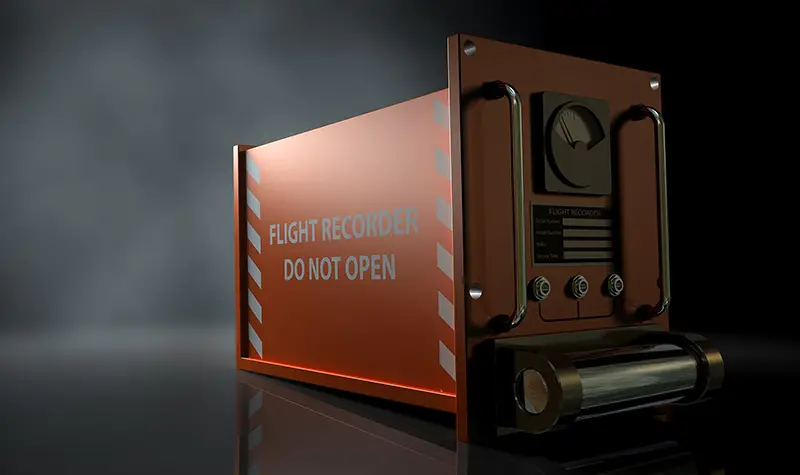Click here to get this post in PDF
Terrible aviation tragedies like the recent crash in China on March 21, 2022 always leave investigators searching for answers. These professionals rely heavily on the information captured in the two recording devices installed in airplanes that are designed to withstand land and sea crashes. These devices are built from durable housings and contain sensitive switches that activate systems under various circumstances. Airplane manufacturers source custom components from a switch manufacturer when building the recorders.
The Cockpit Voice Recorder
Although media outlets refer to the “black box” when reporting on airline crashes, aviation specialists actually work to retrieve two different recorders after a crash. The cockpit voice recorder (CVR) gathers audio from the flight crew. Their conversations often reveal vital clues about what they were dealing with prior to a catastrophe. Their words could inform investigators about mechanical problems or human errors. In addition to spoken words, the recorder captures other sounds, such as people flipping switches or any sound that is present in the cockpit.
The cockpit recorder is integrated with microphones positioned throughout the cockpit. Depending on the size of the plane and the crew, up to four microphones can be present. They are positioned in the headsets of the pilot, co-pilot, other crew members if applicable, and in the center of the cockpit. The microphones route the audio data through a pre-amplification control unit before sending it to the CVR. The device then digitizes the audio data for storage.
The Flight Data Recorder
Airplanes also contain a flight data recorder (FDR). This device captures and stores operational data from the airplane’s mechanical systems. Sensors throughout the airplane are wired directly to the FDR for recording. Each time a member of the flight crew activates a switch, a signal goes through the wiring to the FDR. The stored information provides crash investigators with insights about anything that might have gone wrong mechanically as well as what the flight crew did in response.
A specialty switch manufacturer makes many types of aviation switches, including ones that go inside an FDR. An example of a specialty switch is the one that turns on the underwater locator beacon (ULB) if it comes into contact with water. This beacon issues an ultrasonic pulse that search crews can detect with sonar. This signal can be detected up to depths of 14,000 feet.
Both Recorders Recovered From Downed Chinese Flight
The startling nosedive crash of the Boeing 737-800 jet operated by China Eastern Airlines into a mountainside required recovery crews to search for wreckage in remote, alpine terrain. They first found the FDR, which has been sent to experts in the Chinese capital of Beijing.
More time passed before recovery workers found the CVR. Workers dug it out of a muddy slope. The crash impact had embedded the part about 5 feet into the ground roughly 130 feet away from the point of impact. The unit appears to be seriously damaged but the memory unit may yet yield data that will explain why all 132 people on board died.
The recording devices installed in airplanes are built to withstand tremendous forces to protect their data storage cores. Engineers design them to survive high heat, high pressure, and blunt forces.
Three layers of material encase the memory units. An aluminum housing holds the memory cards. The middle layer contains a high-performance insulation made of dry silica that prevents the heat of fires from reaching the memory cards. On the outside, a 1/4-inch thick stainless steel shell wraps the entire unit. Some recorders are also wrapped in titanium.
You may also like: How does drone technology work?

